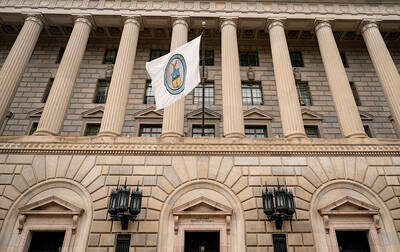With 3G licenses set to expire at the end of this year, local telecoms are offering affordable tariffs and subsidies to encourage 3G subscribers to migrate to 4G services.
As of June 30, the nation’s four telecoms still have a combined 2.43 million 3G users, down from 6.42 million at the end of last year, statistics compiled by the National Communications Commission showed.
Taiwan Mobile Co (台灣大哥大), the nation’s second-largest operator, had the highest number of 3G users at 943,000, the figures showed.
To retain its subscribers, Taiwan Mobile yesterday said that it is offering a low-cost smartphone with a fingerprint recognition feature from its own-brand series for free to those who upgrade to its 4G service for a minimum monthly fee of NT$399.
Meanwhile, Far EasTone Telecommunications Co (遠傳電信) is aiming to lure 3G users from its rivals.
Far EasTone is offering a free rice cooker from Xiaomi Corp (小米) if they subscribe to the company’s entry-level 4G services that start as low as NT$199 a month.
The tariff is much lower than the average monthly bill of NT$500 for 3G users, Far EasTone said in a company statement.
The rice cooker retails for NT$2,495, it said.
Earlier this month, Chunghwa Telecom Co (中華電信), the nation’s biggest telecom operator, launched a NT$199 service package to encourage 3G users to upgrade to 4G services.
The offer comes with a free Asus ZenFone Live from Asustek Computer Inc (華碩).
To speed up the transition to 4G services, Chunghwa Telecom said it plans to add new models from Sugar and Panasonic to go with lower-priced 4G service packages for 3G users.
Chunghwa Telecom has about 1 million 3G users after 1.8 million of its 3G users switched to its 4G network, it said.
In a separate statement, Chunghwa Telecom on Monday said that the FIFA World Cup added 120,000 subscribers to its multimedia-on-demand (MOD) Internet TV service.
With 1.82 million subscribers now, the company said it is confident it would be able to reach its target of 2 million by the end of this year.

Taiwan’s foreign exchange reserves hit a record high at the end of last month, surpassing the US$600 billion mark for the first time, the central bank said yesterday. Last month, the country’s foreign exchange reserves rose US$5.51 billion from a month earlier to reach US$602.94 billion due to an increase in returns from the central bank’s portfolio management, the movement of other foreign currencies in the portfolio against the US dollar and the bank’s efforts to smooth the volatility of the New Taiwan dollar. Department of Foreign Exchange Director-General Eugene Tsai (蔡炯民)said a rate cut cycle launched by the US Federal Reserve

The US government on Wednesday sanctioned more than two dozen companies in China, Turkey and the United Arab Emirates, including offshoots of a US chip firm, accusing the businesses of providing illicit support to Iran’s military or proxies. The US Department of Commerce included two subsidiaries of US-based chip distributor Arrow Electronics Inc (艾睿電子) on its so-called entity list published on the federal register for facilitating purchases by Iran’s proxies of US tech. Arrow spokesman John Hourigan said that the subsidiaries have been operating in full compliance with US export control regulations and his company is discussing with the US Bureau of

Pegatron Corp (和碩), a key assembler of Apple Inc’s iPhones, on Thursday reported a 12.3 percent year-on-year decline in revenue for last quarter to NT$257.86 billion (US$8.44 billion), but it expects revenue to improve in the second half on traditional holiday demand. The fourth quarter is usually the peak season for its communications products, a company official said on condition of anonymity. As Apple released its new iPhone 17 series early last month, sales in the communications segment rose sequentially last month, the official said. Shipments to Apple have been stable and in line with earlier expectations, they said. Pegatron shipped 2.4 million notebook

Businesses across the global semiconductor supply chain are bracing themselves for disruptions from an escalating trade war, after China imposed curbs on rare earth mineral exports and the US responded with additional tariffs and restrictions on software sales to the Asian nation. China’s restrictions, the most targeted move yet to limit supplies of rare earth materials, represent the first major attempt by Beijing to exercise long-arm jurisdiction over foreign companies to target the semiconductor industry, threatening to stall the chips powering the artificial intelligence (AI) boom. They prompted US President Donald Trump on Friday to announce that he would impose an additional